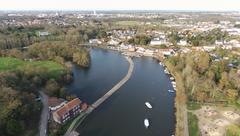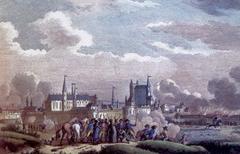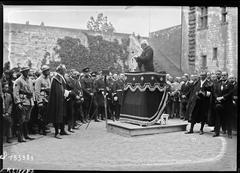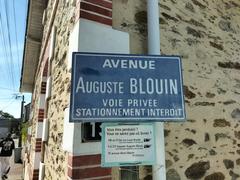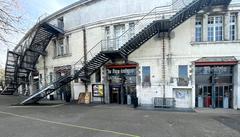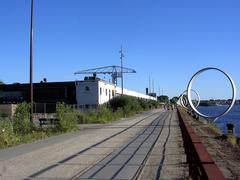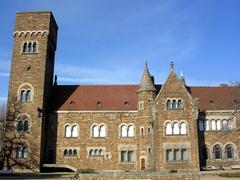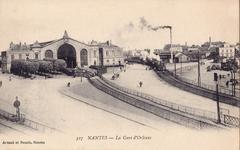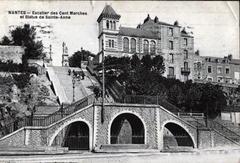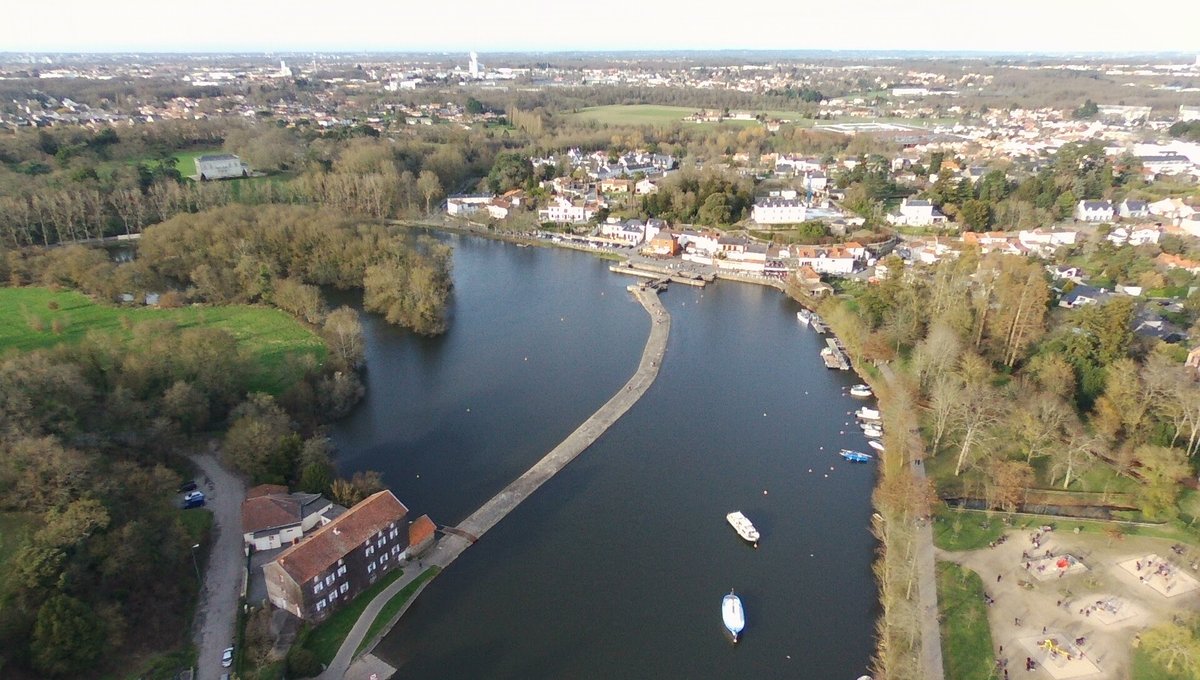
Chaussée des Moines Visiting Guide: Hours, Tickets, and Tips
Published on: 19/07/2024
Why Visit Chaussée des Moines
Welcome to the Chaussée des Moines, or the Monks’ Causeway, a historical gem nestled in the heart of Nantes, France. With origins stretching back to the medieval era, this landmark offers visitors a unique window into the rich tapestry of Nantes’ past. Constructed by the industrious Benedictine monks from the Abbey of Saint-Serge in Angers, the causeway was initially designed to facilitate travel and commerce along the vital Loire River trade route. Over the centuries, Chaussée des Moines has been a silent witness to the region’s economic prosperity, social evolution, and architectural advancements, making it a must-visit for history enthusiasts and cultural explorers.
This comprehensive guide aims to provide an in-depth look at the causeway’s historical significance, architectural marvels, and practical visitor information, ensuring you make the most out of your visit to this iconic site. From its role in medieval trade to its preservation efforts in the 20th century, the Chaussée des Moines remains a testament to the enduring legacy of Nantes’ historical and cultural heritage. Whether you’re drawn by its storied past or its vibrant present, the Chaussée des Moines promises an enriching and unforgettable experience. For more information, visit the official Nantes tourism website.
What You Will Find in This Guide
- Introduction
- Origins and Early History
- Development During the Middle Ages
- Renaissance and Modernization
- Industrial Revolution and Urbanization
- 20th Century and Preservation Efforts
- Cultural Significance and Modern-Day Importance
- Visiting Information
- Visiting Hours
- Tickets
- Travel Tips
- Special Events and Guided Tours
- Conclusion
- FAQ
Exploring Chaussée des Moines in Nantes - History, Visiting Hours & Tips
Introduction
Nantes, a city rich in history and culture, is home to the Chaussée des Moines, or the Monks’ Causeway. This historical landmark offers visitors a glimpse into the medieval past of the city, with its origins dating back to the time when Benedictine monks from the Abbey of Saint-Serge in Angers constructed it. This article delves into the fascinating history of the Chaussée des Moines, along with essential visitor information such as visiting hours, ticket prices, and travel tips.
Origins and Early History
The Chaussée des Moines is historically significant due to its strategic location along the Loire River, a crucial trade route during the Middle Ages. The construction of the causeway is attributed to the Benedictine monks, who were instrumental in developing the region’s infrastructure, including roads and bridges, to facilitate travel and commerce. The causeway served as a vital link between the abbey and the surrounding areas, enabling the transport of goods and people.
Development During the Middle Ages
During the Middle Ages, the Chaussée des Moines played a crucial role in the economic and social life of Nantes. It facilitated the movement of pilgrims, merchants, and travelers, contributing to the growth of Nantes as a significant urban center. The monks also constructed fortifications along the route to protect travelers from bandits and other threats.
Renaissance and Modernization
The Renaissance period brought significant changes to the Chaussée des Moines. The causeway was expanded and improved to accommodate the increasing volume of traffic. With the development of new engineering techniques, the causeway was paved with cobblestones, and drainage systems were installed to prevent flooding and erosion. This period saw the causeway become a popular route for traders and merchants, fostering the growth of a bustling commercial hub around it.
Industrial Revolution and Urbanization
In the 19th century, the Industrial Revolution brought further changes. The construction of railways reduced the causeway’s importance as a primary trade route, but it remained an essential part of the local infrastructure. Urbanization led to the expansion of Nantes, and the area around the causeway became increasingly urbanized, integrating it into the city’s road network.
20th Century and Preservation Efforts
The 20th century posed challenges due to urban development and modernization. However, local authorities and heritage organizations recognized the importance of preserving this historical landmark. Efforts were made to protect and restore the causeway, including repairing cobblestones and upgrading drainage systems.
Cultural Significance and Modern-Day Importance
Today, the Chaussée des Moines is a symbol of Nantes’ rich history and cultural heritage. It is a popular destination for tourists and history enthusiasts, hosting various cultural events and festivals. The area around the causeway has developed into a vibrant cultural district, with museums, galleries, and cultural centers showcasing the city’s heritage.
Visiting Information
- Visiting Hours - The Chaussée des Moines is accessible year-round. However, specific landmarks and museums in the area may have varying hours of operation. It is advisable to check the official websites for the latest information.
- Tickets - Entrance to the causeway itself is free, but certain attractions and guided tours may require tickets. Prices vary depending on the tour or attraction.
- Travel Tips - The causeway is easily accessible by public transportation. Nearby attractions include the Château des Ducs de Bretagne and the Jules Verne Museum. The area offers a variety of dining and shopping options, making it a perfect destination for a day trip.
- Special Events and Guided Tours - The causeway hosts events throughout the year. Guided tours are available, offering insights into its rich history. Photographic spots include panoramic views of the Loire River and historical landmarks.
Conclusion
In conclusion, the Chaussée des Moines is a must-visit destination for history enthusiasts and tourists alike. Its significance as a medieval trade route and its role in the city’s development make it a landmark of great historical and cultural value. Plan your visit to explore the rich heritage of Nantes and enjoy the scenic beauty of this historic causeway.
FAQ
Q - What are the visiting hours for the Chaussée des Moines?
A - The causeway is accessible year-round, but specific landmarks and museums may have different hours. Check the official websites for up-to-date information.
Q - Are tickets required to visit the Chaussée des Moines?
A - Entrance to the causeway is free, but certain attractions and guided tours may require tickets.
Q - What nearby attractions can I visit?
A - Nearby attractions include the Château des Ducs de Bretagne and the Jules Verne Museum.
Q - Are guided tours available?
A - Yes, guided tours are available and offer detailed insights into the history of the causeway.
Stay Connected
For more updates and information, download the Audiala mobile app, check out related posts, or follow us on social media.
Key Takeaways
In conclusion, the Chaussée des Moines stands as a significant emblem of Nantes’ historical and cultural heritage. This ancient causeway, with its roots firmly planted in the medieval period, has seamlessly woven itself into the urban fabric of modern Nantes, offering a fascinating journey through time. The efforts to preserve and celebrate this landmark underscore its importance to the local community and its appeal to visitors worldwide. As you walk along its cobblestone paths, explore its architectural marvels, and participate in its vibrant cultural activities, you’ll gain a deeper appreciation for the rich history and enduring spirit of Nantes. Whether you’re a history buff, a cultural enthusiast, or simply looking for a unique travel experience, the Chaussée des Moines is a destination that promises to leave you inspired and enriched. Plan your visit today and immerse yourself in the timeless charm of this historic causeway. Stay connected for updates and more information by downloading the Audiala mobile app, and follow us on social media to stay up-to-date with the latest events and attractions.
Sources and Further Reading
- Exploring Chaussée des Moines in Nantes - History, Visiting Hours & Tips, 2024, official Nantes tourism website
- Exploring Chaussée des Moines - Historical Significance, Visiting Hours, and More, 2024, official Nantes tourism website
- Exploring Chaussée des Moines - A Visitor’s Guide to Nantes’ Historic Monastic Route, 2024, official Nantes tourism website
